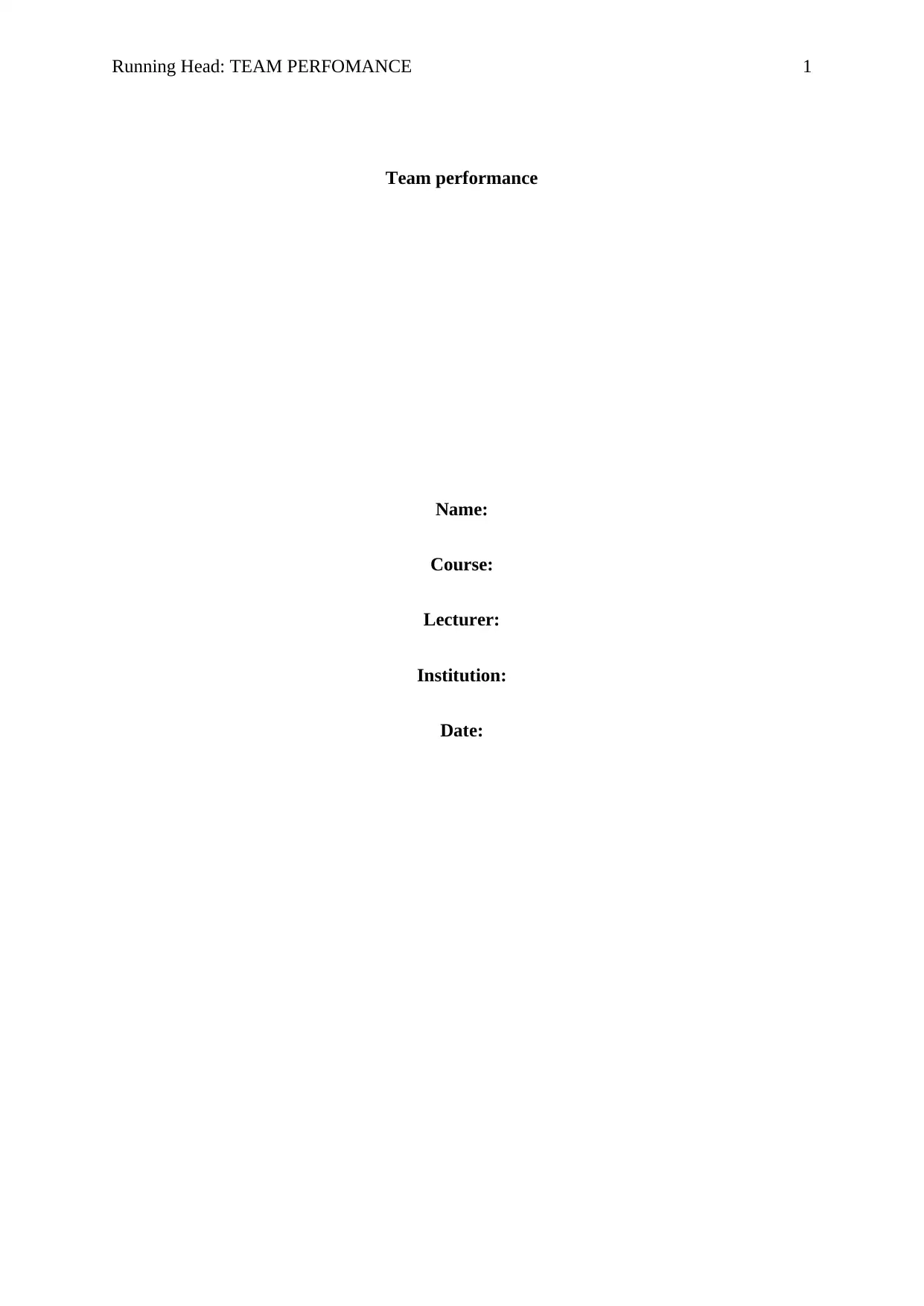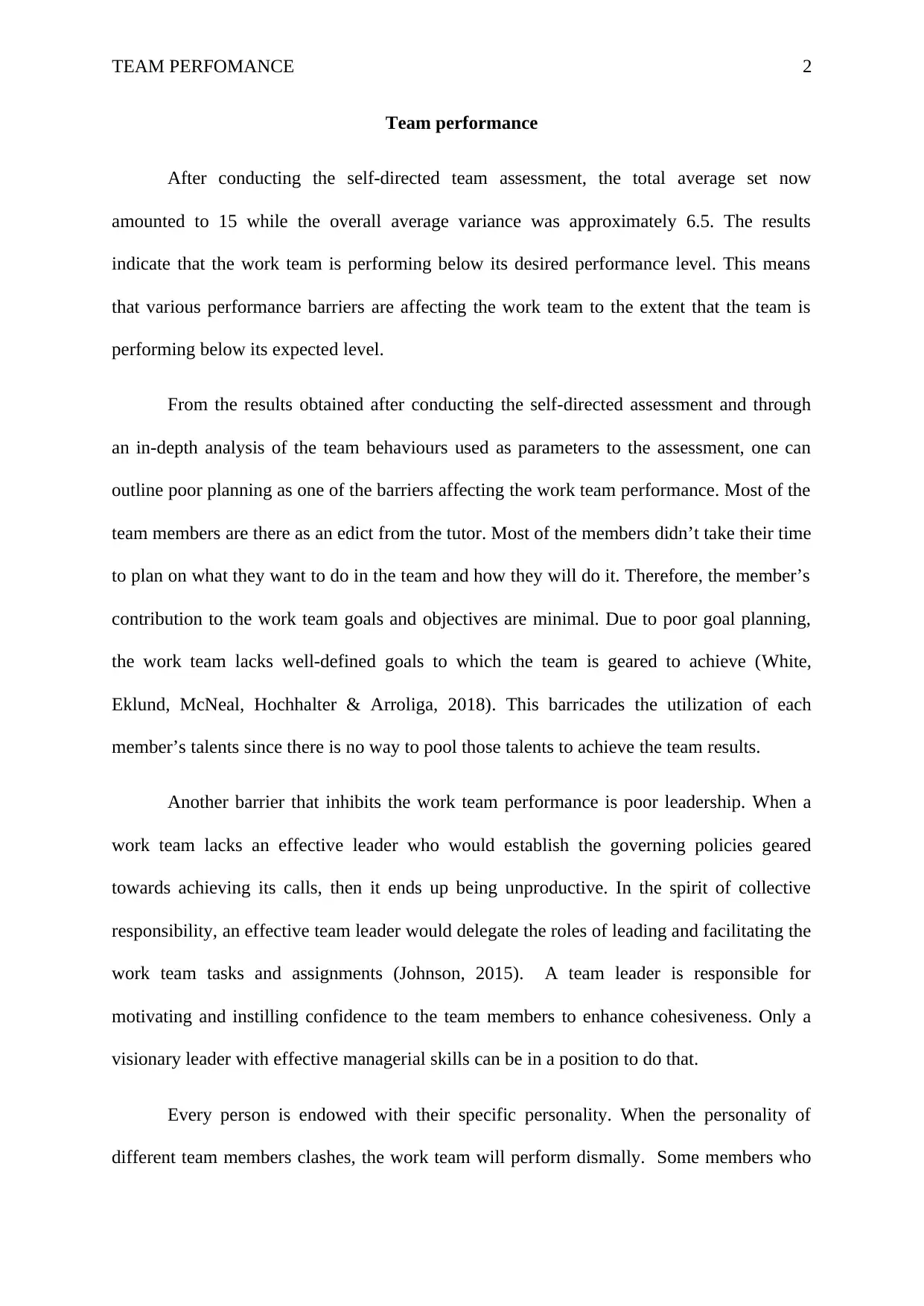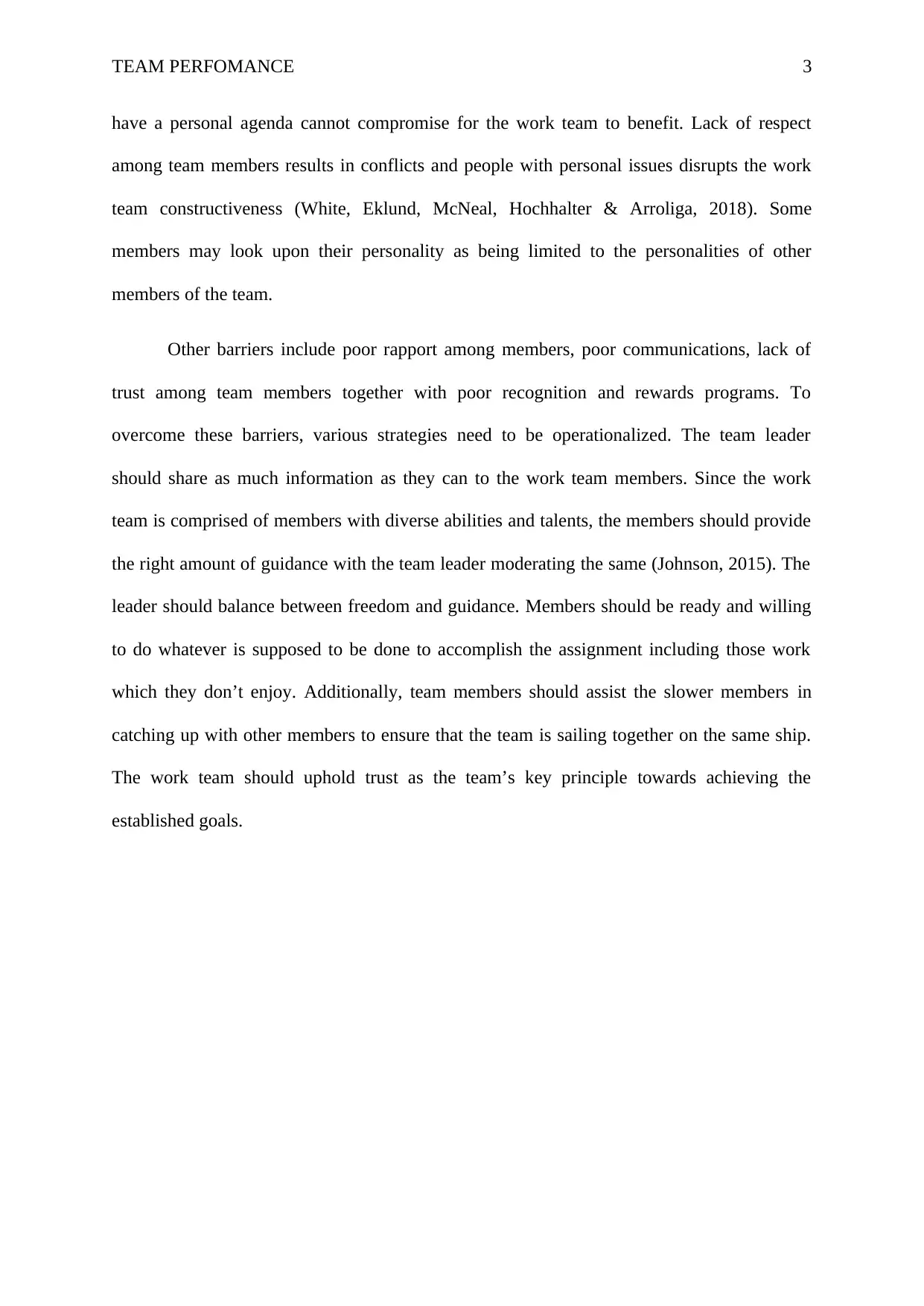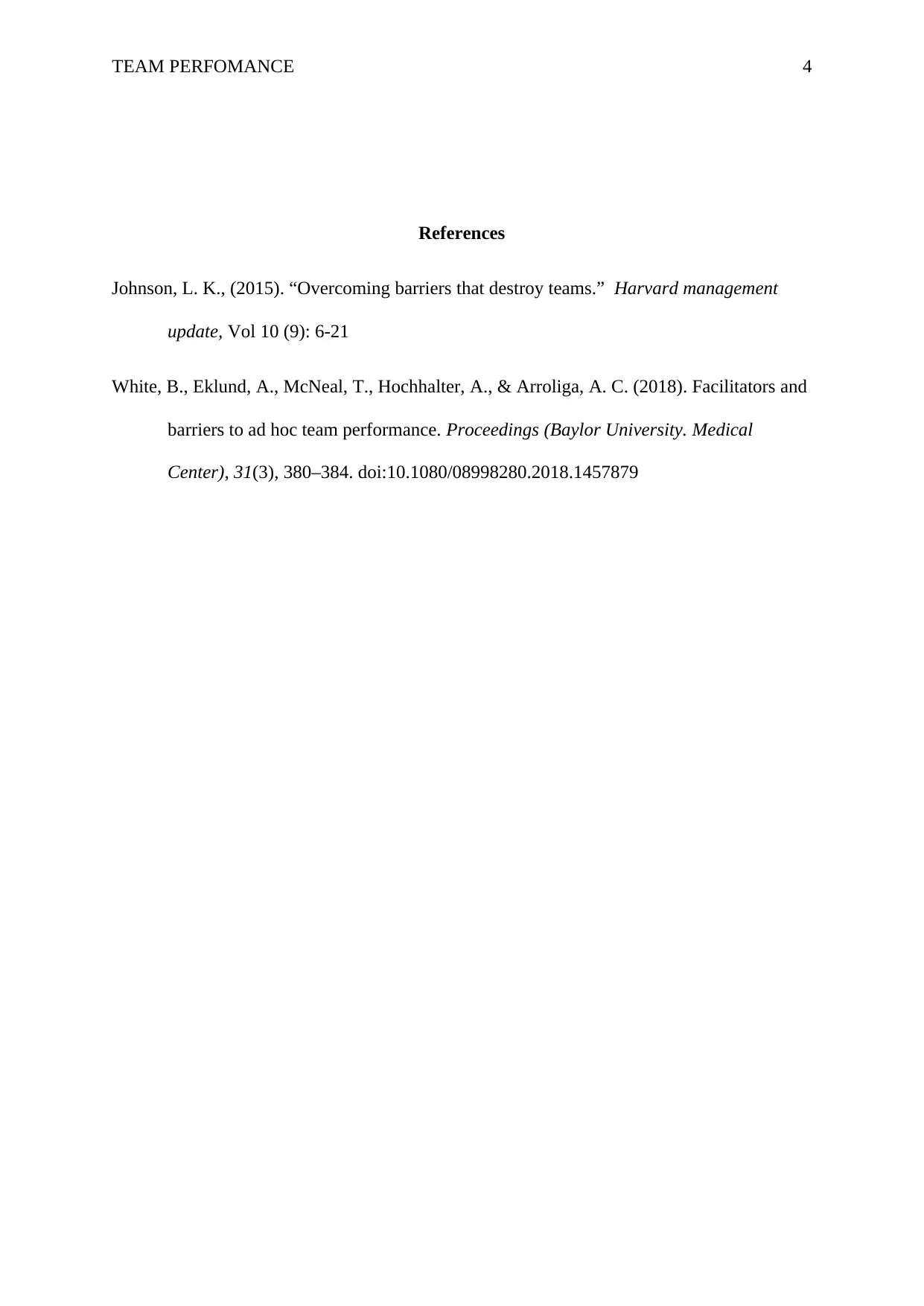Team Performance Analysis: Barriers, Strategies, and Solutions
VerifiedAdded on 2023/02/01
|4
|704
|45
Report
AI Summary
This report analyzes team performance, based on a self-directed team assessment, revealing that the team is performing below its desired level. The analysis identifies key barriers such as poor planning, ineffective leadership, and personality clashes among team members. The report emphasizes the lack of well-defined goals, poor delegation of responsibilities, and conflicts resulting from personal agendas and lack of respect. To overcome these challenges, the report suggests strategies including improved information sharing by the team leader, balanced guidance, and a focus on trust and collaboration. The report also highlights the importance of members assisting each other and upholding trust as a key principle for achieving team goals, referencing relevant literature on team dynamics and performance.
1 out of 4











![[object Object]](/_next/static/media/star-bottom.7253800d.svg)